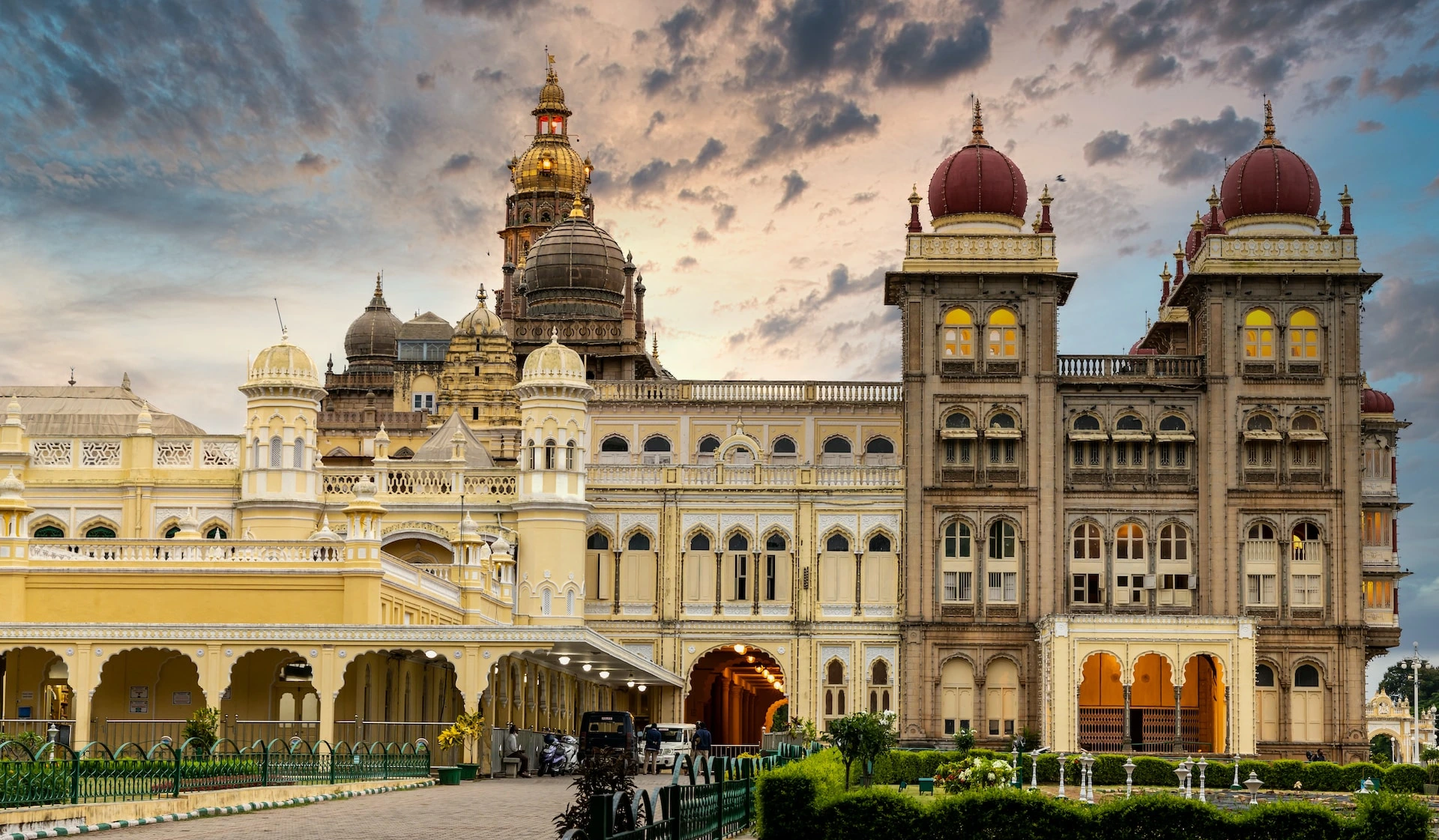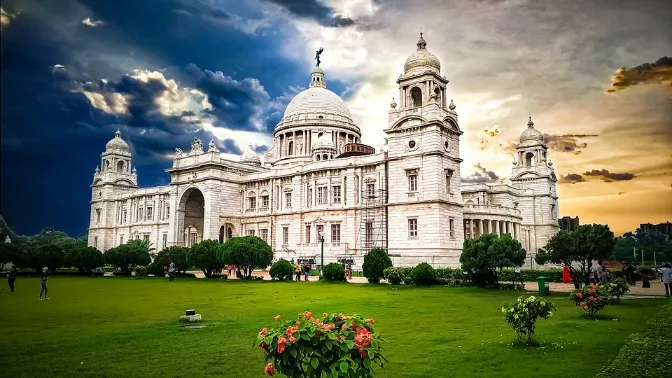In our childhood, many of us dream of finding ourselves on a mysterious island with many treasures and adventures. However, it’s not that simple when that island involves intact tribes and mysterious wilderness. In the 21st century, there exists a mysterious island, a place that remains largely untouched by humanity and shrouded in fear and intrigue. The island’s inhabitants, an ancient and fiercely protective tribe, have kept their world closed off from the modern age. This tribe, known for their lethal hostility, meets any uninvited visitors with deadly force. Stories abound of arrows and spears used to repel those who dare approach their shores. This isn’t the premise of a fictional TV series, it’s real life.
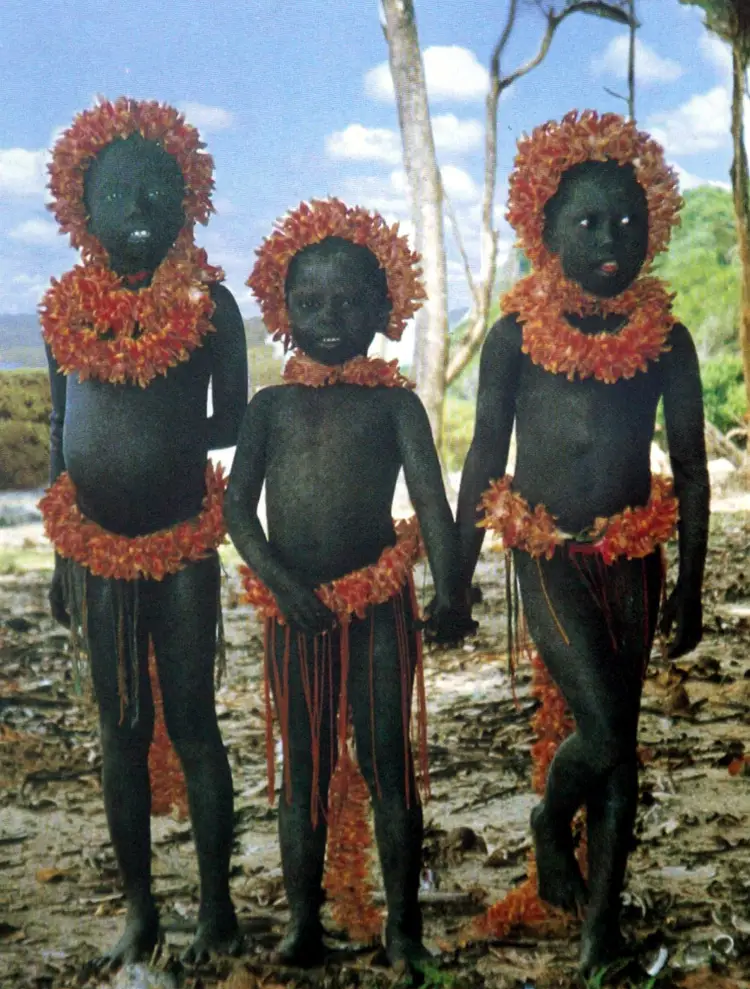
In a world of rapid urbanization, we often assume no places are left isolated without external contact on Earth. But the tiny island of North Sentinel, which is part of the Andaman group of islands in the Bay of Bengal, is living proof to the contrary. The island itself is a place of stark beauty and mystery. While you can easily enjoy the splendour of the Andaman Islands by booking a car rental to Chennai Port or Chennai Airport and travelling by sea or air, North Sentinel Island remains a forbidden land. Dense forests cover much of the land, with only hints of human habitation visible from afar. The people living here are among the most isolated on Earth. Their lives are untouched by the progress and turmoil of the outside world. Here, at the crossroads of the Bay of Bengal and the Andaman Sea, the most isolated people on our planet continue to live in the shadow of both fear and fascination.
Sentinelese Secrets – Life on North Sentinel Island
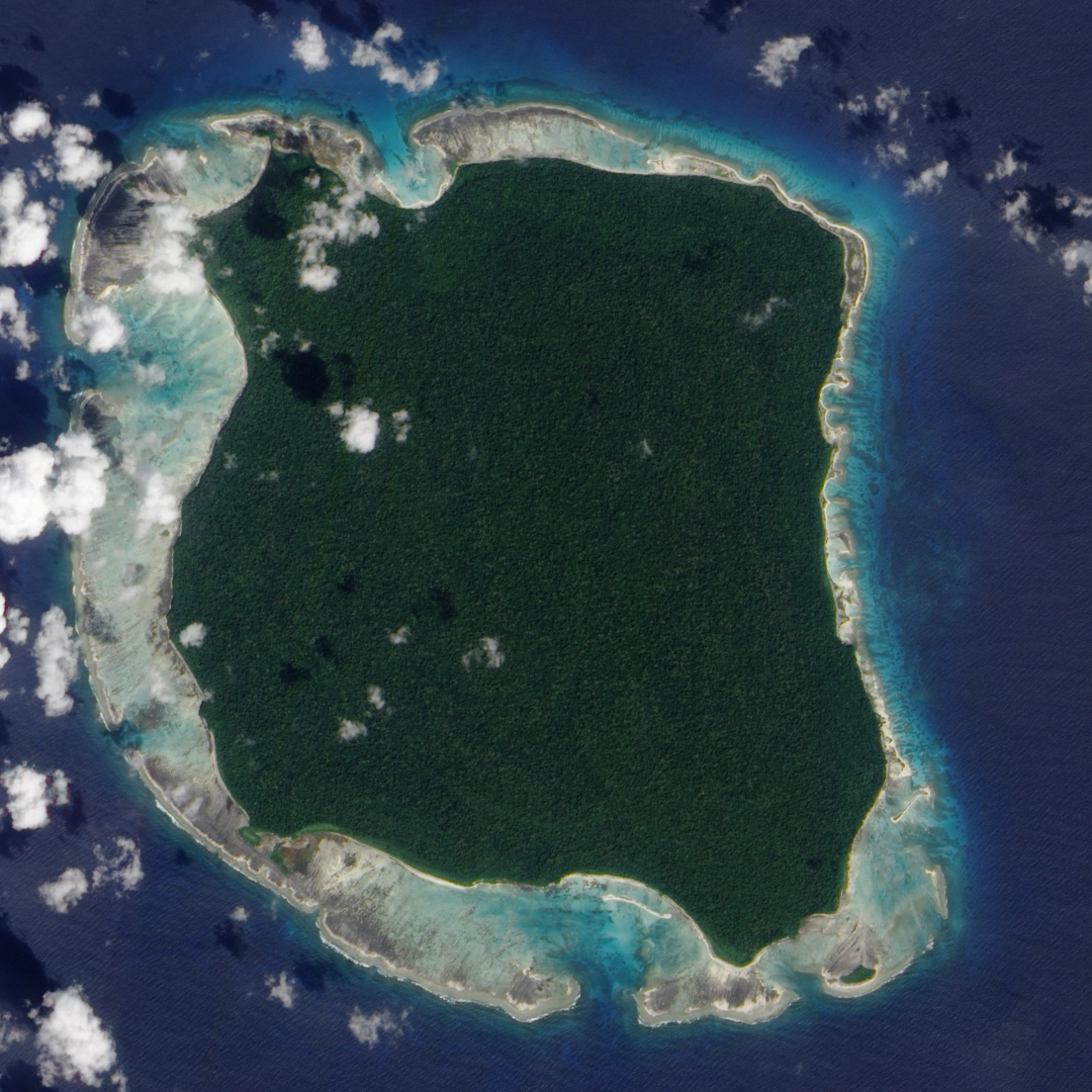
North Sentinel Island, a protected area of India, is home to the Sentinelese, an indigenous tribe in voluntary isolation. Fiercely defending their seclusion from the outside world, the Sentinelese often use force to repel intruders. The island measures approximately 8 kilometers (5.0 mi) in length and 7 kilometers (4.3 mi) in width, covering an area of about 60 square kilometers (23 sq mi). Despite its intriguing allure, visiting the island is strictly prohibited.
Travel to North Sentinel Island is forbidden under the Andaman and Nicobar Islands Protection of Aboriginal Tribes Regulation of 1956. This regulation restricts any approach closer than 5 nautical miles (9.3 km) to safeguard the tribe from potential exposure to infectious diseases against which they have no immunity. The Indian Navy patrols the area to enforce these protections.
Insights into the Sentinelese
Most of what is known about the Sentinelese tribe comes from observations made from boats moored at a safe distance. And, there are a few rare instances when the tribe allowed authorities to approach closely enough to exchange coconuts. Even their self-designation and what they call their island remain unknown, though the neighbouring Onge tribe refers to North Sentinel as ‘Chia daaKwokweyeh’.
The Sentinelese tribe are a nomadic, hunter-gatherer group. They hunt and gather in the forest and fish in the coastal waters. Unlike the neighbouring Jarawa tribe, they build narrow outrigger canoes, used in shallow waters and propelled with poles like punts. The tribe is believed to live in three small bands and constructs two types of shelters: large communal huts with multiple hearths for several families, and more temporary, open-sided shelters seen on the beach, accommodating single-family units.
Sentinelese is the unclassified language that the Sentinelese people of North Sentinel Island speak. This North Sentinelese language, known as Sentinelese, is not understood by other Negrito groups. It is believed to belong to the Andamanese family of languages.
Women of the Sentinelese tribe wear fiber strings around their waists, necks, and heads. Men adorn themselves with thicker waist belts, necklaces, and headbands. They often carry spears, bows, and arrows, highlighting their readiness to defend their territory. And the reason for this traces back to the colonial period.

Why don’t the Sentinelese like visitors?
In 1296 or thereabouts, Marco Polo described Andamanese generally as “a most brutish and savage race, having heads, eyes, and teeth like those of dogs. They are very cruel, and kill and eat every foreigner whom they can lay their hands upon.” In 1771, an East India Company vessel sailed past Sentinel Island and saw lights gleaming on the shore. However, the ship, on a hydrographic survey mission, had no reason to stop, leaving the Sentinelese tribe undisturbed for nearly a century. This changed when an Indian merchant ship called the Nineveh ran aground on the reef. The 86 passengers and 20 crew members managed to reach the beach, where they huddled for three days before the Sentinelese, seemingly having had enough, attacked with bows and iron-tipped arrows.
Western history only records the Nineveh’s side of the encounter, but it is interesting to speculate about the Sentinelese perspective. Was there a debate in their villages about how to handle the newcomers? Did the shipwreck victims unknowingly cross a boundary or violate an unknown law, prompting the Sentinelese to respond? Or did it simply take three days for the tribe to decide on their course of action?
The Nineveh incident
The Nineveh’s passengers and crew responded to the Sentinelese attack with sticks and stones, creating an uneasy standoff until a Royal Navy vessel arrived to rescue the survivors. During this time, the British declared Sentinel Island part of their colonial holdings, a decision that mattered little until 1880.
Maurice Vidal Portman’s expedition
In 1880, a young Royal Navy officer named Maurice Vidal Portman, who had taken charge of the Andaman and Nicobar colony, landed on North Sentinel Island. He came with a large party of naval officers, convicts from the penal colony on Great Andaman Island, and Andamanese trackers. They found only hastily abandoned villages, as the Sentinelese seemed to have fled further inland. However, an elderly couple and four children lagged behind, captured by Portman and taken to Port Blair, the colonial capital on South Andaman Island.
All six captives soon became desperately sick, and the elderly couple died in Port Blair. Portman then decided to drop off the four sick children on the beach of North Sentinel, along with a small pile of gifts. We do not know whether the children spread their illness to the rest of their people or what its impact might have been. But this experience definitely did not endear the North Sentinelese to foreign visitors.
Subsequent incidents
In 1896, an escaped convict from the Great Andaman Island Penal Colony tried to flee on a makeshift raft but washed ashore on North Sentinel Island. A colonial search party later found his remains, full of arrow wounds, with his throat cut. This incident led the British to wisely decide to leave the North Sentinelese in peace for the next century or so.
Reaching out – Attempts to befriend the Sentinelese tribe
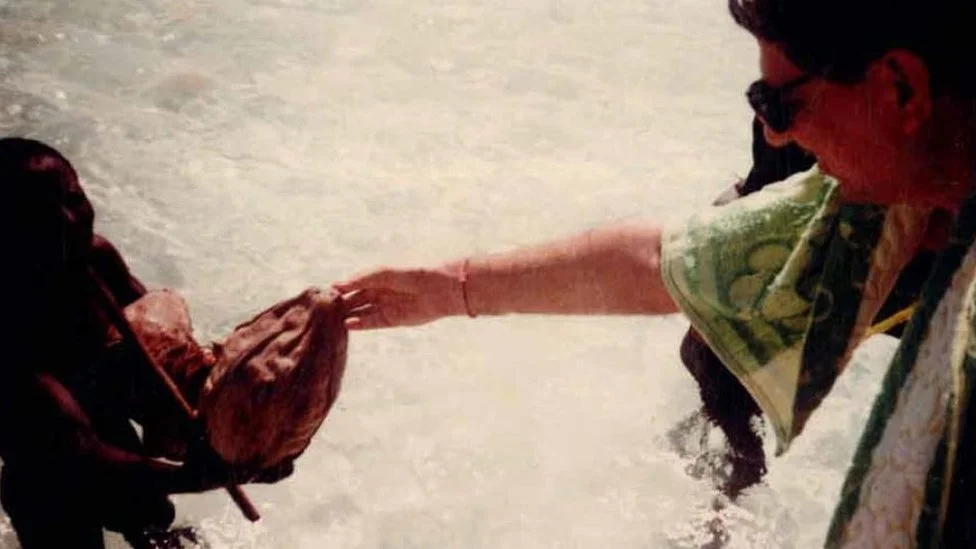
A hundred years after the wreck of the Nineveh, a team of anthropologists led by Trinok Nath Pandit, under the auspices of the Indian government, landed on North Sentinel Island. Like Portman before them, they found only hastily abandoned huts, with fires still lit outside. Pandit and his team left gifts such as bolts of cloth, candy, and plastic buckets. However, naval officers and Indian police accompanying Pandit also took bows, arrows, baskets, and other items from the unguarded homes, despite the anthropologists’ protests, further tarnishing the outside world’s image.
Persistent efforts by Pandit and his team
Pandit and his colleagues continued to attempt contact by pulling a dinghy onto the beach, leaving coconuts and other gifts, and quickly retreating. The North Sentinelese showed little interest in live pigs or plastic toys, often spearing and burying them in the sand. However, they seemed to appreciate metal pots and pans and grew particularly fond of coconuts, which do not grow on the island. Over 25 years, Pandit believed that these visits, though sporadic, were gradually building trust.
In 1974, a National Geographic film crew accompanied one of these visits, resulting in the director receiving an arrow in the thigh. In 1975, the exiled King Leopold III of Belgium passed close to the island during a boat tour and was similarly warned off with arrows, which he reportedly found delightful.
The 1981 incident and renewed contact efforts
In 1981, a cargo ship named the Primrose ran aground on the reef, echoing the Nineveh incident. The sailors were rescued by helicopter, and later, visitors observed that the North Sentinelese had salvaged metal from the ship for their tools and weapons. That same year, Pandit intensified his efforts, visiting the island every month or two.
A breakthrough in 1991
In early 1991, a decade of regular visits paid off. For the first time, a group of North Sentinelese came to the beach to collect gifts without weapons, carrying only woven baskets and adzes. Later that day, two dozen Sentinelese tribe approached the beach, and a notable interaction occurred. A man raised his bow at the visitors, but a woman pushed it down. He then buried the bow and arrow in the sand, after which the people rushed to the boats to collect coconuts.
Despite this breakthrough, the Sentinelese hospitality had limits. On a subsequent visit, a North Sentinelese man signaled to Pandit that it was time to leave by drawing a knife and making a cutting gesture.
End of visits and later encounters
The tenuous relationship never progressed beyond exchanging coconuts. The Sentinelese tribe never reciprocated with gifts, invitations, or communication. Occasionally, the anthropologists were still greeted by armed men on the beach. In 1996, the Indian government suspended these visits.
Following the 2004 tsunami, Indian Coast Guard helicopters found the Sentinelese in good health but hostile, attacking the helicopters with bows and arrows. In 2006, an Indian crab harvesting boat drifted ashore, and the Sentinelese killed both fishermen and buried their remains.
World’s first friendly contact with the Sentinelese
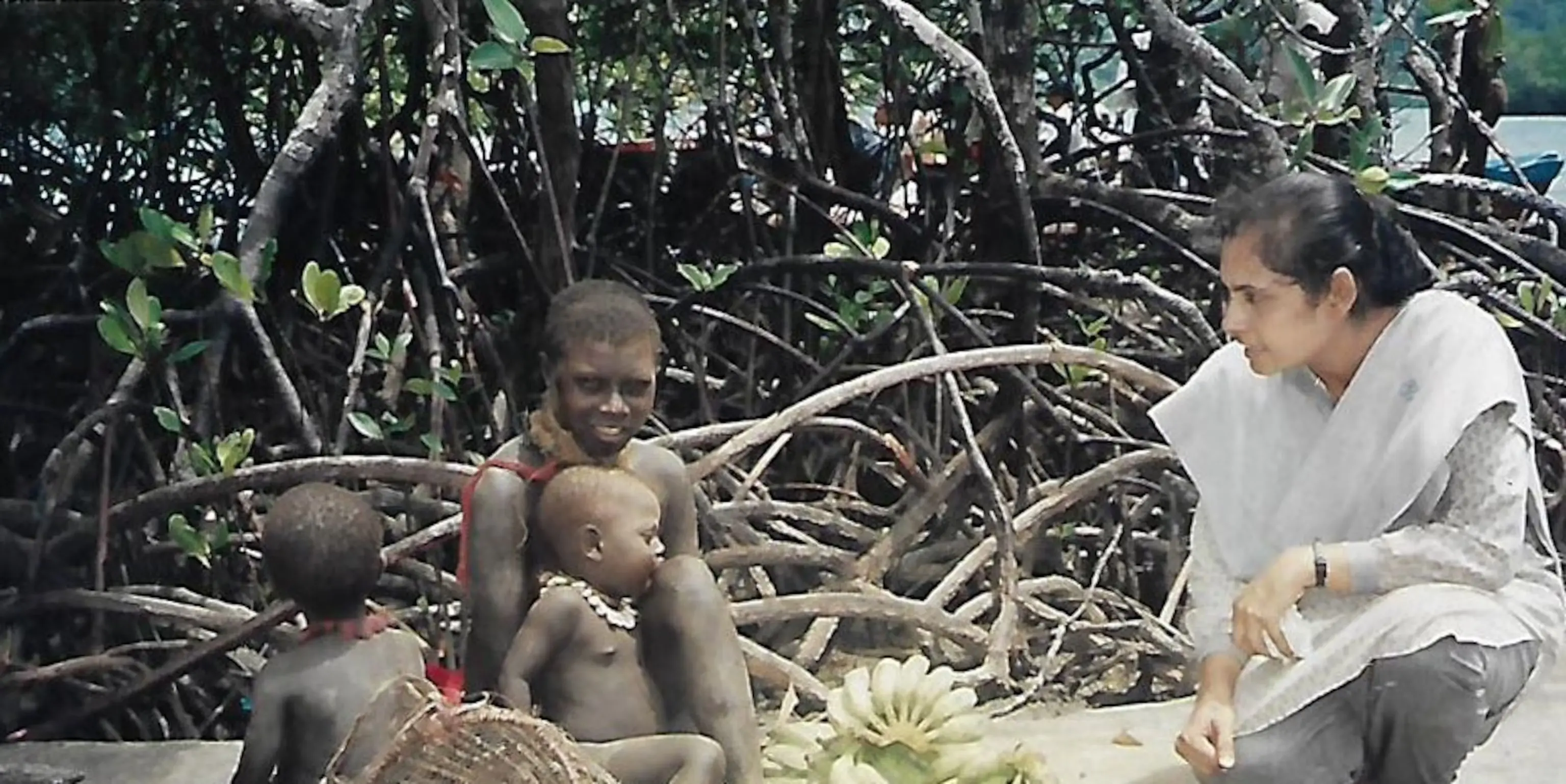
Madhumala Chattopadhyay, currently a senior research officer with the Ministry of Social Justice and Empowerment, made history on January 4, 1991, as the first woman anthropologist to establish friendly contact with the traditionally hostile North Sentinelese tribe. After excelling in her anthropology studies at university, she applied for a PhD fellowship with the Anthropological Survey of India to conduct field research in these remote islands.
Given the scarcity of Indian women in this field and concerns for her safety, the committee overseeing her application requested Madhumala’s mother to sign an undertaking absolving the ASI of liability in case of any mishap during her research.
On January 4, 1991, Madhumala, part of a 13-member team, approached the Sentinelese island by boat. As they neared, the team saw some Sentinelese, armed with bows and arrows. The visitors dropped coconuts in the water, and a small group of North Sentinelese approached in a canoe to collect the offerings.
During a subsequent visit with more coconuts, the North Sentinelese directly approached the boat and collected the coconuts themselves. A tense moment occurred when a young Sentinelese aimed an arrow at the team, but a Sentinelese woman purposefully intervened, causing the arrow to miss. This act of protection indicated a shift in the tribe’s perception of the visitors.
Seeing a woman among the visitors likely helped the North Sentinelese tribe see them as non-threatening. Madhumala then entered the water and personally handed over coconuts, marking a historic moment of peaceful contact between the North Sentinelese and outsiders, influenced by the presence of a woman. Madhumala’s subsequent visit on February 21 was met with a warm reception from the tribe.
The final forced recorded attempt – John Allen Chau
John Allen Chau, an American missionary, despite the travel restrictions to the island, allegedly bribed fishermen in the Andaman and Nicobar Islands to take him close to North Sentinel Island. Using a kayak, he attempted to make contact with the North Sentinelese to preach Christianity and convert them.
In his final diary entries, Chau detailed his attempts to connect with the tribe. He reportedly called out, “My name is John. I love you and Jesus loves you,” but retreated after receiving a hostile response. On his next attempt, arrows fired at him, one piercing the Bible he carried. Undeterred, he went back once more. The following morning, fishermen saw the islanders burying his body on the beach, where it remains. The death of this American tourist had drawn the world’s attention to the small island’s detached citizens. The incident has also sparked discussion about protections for relatively uncontacted groups like the Sentinelese tribe.
Isolation as a shield – The vital need to respect Sentinelese tribe autonomy
It is crucial to respect the North Sentinelese tribe’s isolation, particularly because they are not immunized against common diseases that the rest of the world has built resistance to over centuries.
The North Sentinelese tribe are a highly endogamous group, meaning they primarily breed within their own community. This has led to an accumulation of recessive mutations within their gene pool. Such genetic homogeneity can pose significant risks: if an epidemic strikes, the entire population can get decimated due to a lack of protective genes that might otherwise offer some level of immunity. Their immune systems have not been exposed to and, therefore, have not adapted to pathogens that are common elsewhere in the world. Historical records show that indigenous tribes similar to the North Sentinelese tribe have suffered catastrophic population declines when exposed to diseases like malaria and measles. These diseases can spread rapidly and lethally through small, unexposed populations.
Moreover, the North Sentinelese face threats from natural disasters and infant mortality. The small size of their population means that any significant fluctuation, whether from disease or disaster, can have profound impacts on their survival. Disturbing their way of life with external contact increases these risks exponentially.
Preserving the health and safety of the North Sentinelese necessitates minimal contact. They have survived for thousands of years without outside intervention and will likely continue to do so if left undisturbed. Any attempt to contact them or integrate them into the broader world not only threatens their immediate health but also jeopardizes the cultural and genetic heritage of people who have thrived in isolation.
In essence, respecting the North Sentinelese tribe’s isolation is not merely about preserving their autonomy but is a crucial measure to prevent the potential decimation of their population through introduced diseases. Letting nature take its course is the most respectful and ethical approach to ensuring their continued survival.
Other major tribes in India and their contributions
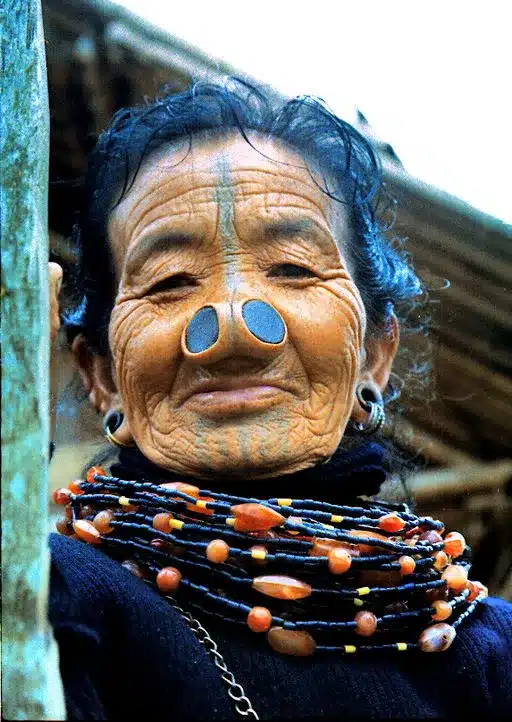
India’s tribal communities, with their vibrant cultural heritage and distinct ways of life, play a crucial role in enhancing the nation’s diversity. Each tribe brings its own unique traditions, languages, and customs, contributing significantly to the cultural mosaic of India. Here are some of the major tribes in India, each with its own remarkable contributions and fascinating aspects:
1. Apatani (Arunachal Pradesh)
The Apatani tribe is famous for its advanced agricultural techniques, particularly wet rice cultivation, without the use of machines or animals. They are also famous for their distinctive facial tattoos and nose plugs, a tradition among Apatani women. The Apatani’s sustainable farming practices and unique cultural identity make them a vital part of India’s tribal mosaic.
Click here to learn more about the Apatani tribe.
2. Siddi (Gujarat, Karnataka, and Goa)
The Siddis are descendants of African immigrants who arrived in India between the 7th and 19th centuries. They have preserved elements of their African heritage, such as vibrant music and dance traditions, while also integrating with local cultures. The Siddis’ unique history and cultural contributions enrich India’s diverse social fabric. Click here to learn more about the Siddi tribe.
3. Santhal (Jharkhand, West Bengal, Odisha, Bihar)
The Santhals are one of the largest tribal communities in India, known for their rich traditions in music, dance, and folklore. They primarily engage in agriculture and have a significant presence in the states of Jharkhand, West Bengal, Odisha, and Bihar. The Santhals have a notable history of resistance against British colonial rule.
4. Bhil (Madhya Pradesh, Gujarat, Rajasthan, Maharashtra)
The Bhils are among the largest tribal groups in India, with a presence in several states. They are traditionally hunters and gatherers but also engage in agriculture. The Bhils are famous for their vibrant festivals, dance, and music. They played a crucial role in India’s freedom struggle through their participation in various uprisings.
5. Gond (Madhya Pradesh, Chhattisgarh, Maharashtra, Odisha, Andhra Pradesh)
The Gonds are one of the largest and oldest tribes in India. They are famous for their unique art, particularly the Gond paintings that depict their mythology and folklore. The Gonds primarily engage in agriculture, animal husbandry, and forestry.
6. Khasi (Meghalaya)
The Khasi tribe is indigenous to Meghalaya and is famous for its matrilineal society, where lineage and inheritance are traced through women. The Khasis are skilled in farming, weaving, and basketry. They are also famous for their traditional dances and festivals.
7. Munda (Jharkhand, Odisha, West Bengal)
The Munda tribe is primarily found in Jharkhand, Odisha, and West Bengal. They have a rich cultural heritage with a strong emphasis on community life and social harmony. The Mundas are known for their traditional dance forms, music, and folklore.
8. Toda (Tamil Nadu)
The Toda tribe resides in the Nilgiri Hills of Tamil Nadu. They are known for their unique barrel-shaped houses and intricate embroidery work. The Todas are traditionally pastoralists, rearing buffaloes, and their social structure and rituals are closely tied to buffalo herding.
9. Warli (Maharashtra, Gujarat)
The Warli tribe is famous for their traditional Warli paintings, which use simple geometric shapes to depict everyday life and the natural world. These paintings are a significant part of India’s tribal art heritage. The Warlis primarily engage in agriculture and gather forest produce.
10. Bhotia (Uttarakhand, Sikkim)
The Bhotia tribe is found in the Himalayan regions of Uttarakhand and Sikkim. They are famous for their transhumance lifestyle, migrating with their herds between high and low altitudes, depending on the season. The Bhotias are skilled traders and weavers, producing beautiful woolen products.
11. Bishnoi (Rajasthan, Haryana, Punjab)
The Bishnoi tribe is famous for their deep-rooted environmental conservation practices and strict adherence to vegetarianism. Originating from Rajasthan, the Bishnois have a profound respect for wildlife and nature, often putting their lives at risk to protect trees and animals. Their commitment to ecological preservation is an inspiration for sustainable living.
Beyond the North Sentinelese Island – Exploring the Andaman and Nicobar Islands
While it is paramount to respect the isolation of the North Sentinelese Islands, the Andaman and Nicobar Islands offer a multitude of other destinations that are sure to captivate any traveller. These islands boast a rich historical background. According to legend, the name “Andaman” originates from the Malays, who have known these islands for centuries as a source of slaves. They referred to the islands as “Handuman,” their pronunciation of Hanuman from the Ramayana, one of India’s great epics. Over time, “Handuman” evolved into “Andaman.”
In addition to their intriguing history, the Andaman and Nicobar Islands are home to many natural wonders, including India’s only active volcano Barren Island. Embark on a journey to explore the diverse beauty and rich history of this stunning archipelago, and discover all that these enchanting islands have to offer.
Cellular Jail – A glimpse into India’s colonial past
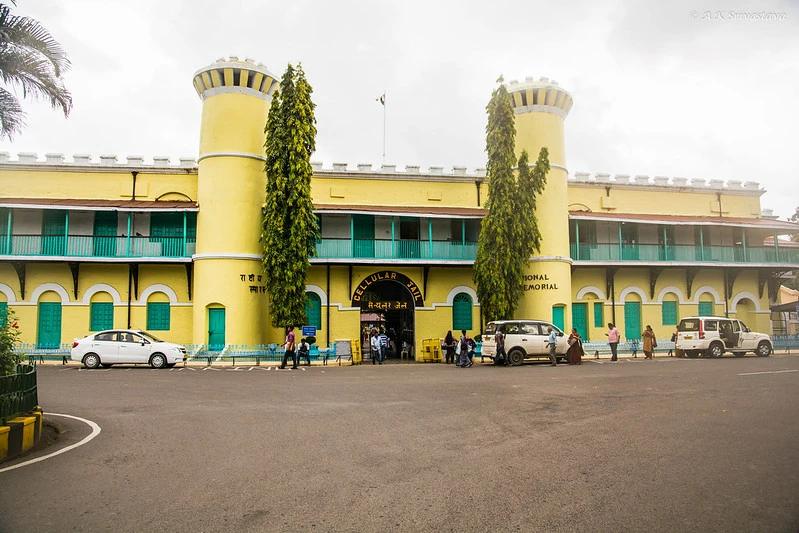
The Cellular Jail, often referred to as ‘Kala Pani’, stands as a significant historical site in Port Blair, the capital city of the Andaman and Nicobar Islands. This colonial prison, built by the British, served as the unfortunate home to numerous Indian freedom fighters, including Batukeshwar Dutt, Yogendra Shukla, and Vinayak Damodar Savarkar, among others. A visit to Cellular Jail is not just a journey back in time; it’s a tribute to the resilience and courage of India’s revolutionaries.
Scuba diving adventures in Andaman
The Andaman and Nicobar Islands are a haven for scuba diving enthusiasts, offering some of the most spectacular underwater experiences. Havelock Island, in particular, stands out as a favorite diving destination, catering to divers of all skill levels. Whether you’re a beginner or an experienced diver, the island’s diverse marine life and clear waters promise an unforgettable diving experience. For those new to the sport, introductory dives start at approximately INR 3,500 for a 30-minute underwater adventure.
Radhanagar Beach – Asia’s finest
Crowned ‘Asia’s Best Beach’ by TIME magazine in 2004, Radhanagar Beach on Havelock Island is a vision of paradise with its crystal-clear turquoise waters and soft, white sandy shores. Stretching over 2 kilometers, the beach offers a serene escape, perfect for soaking in the sun and enjoying the tranquil beauty of the Andaman and Nicobar Islands.
Elephant Beach – A water sports hub
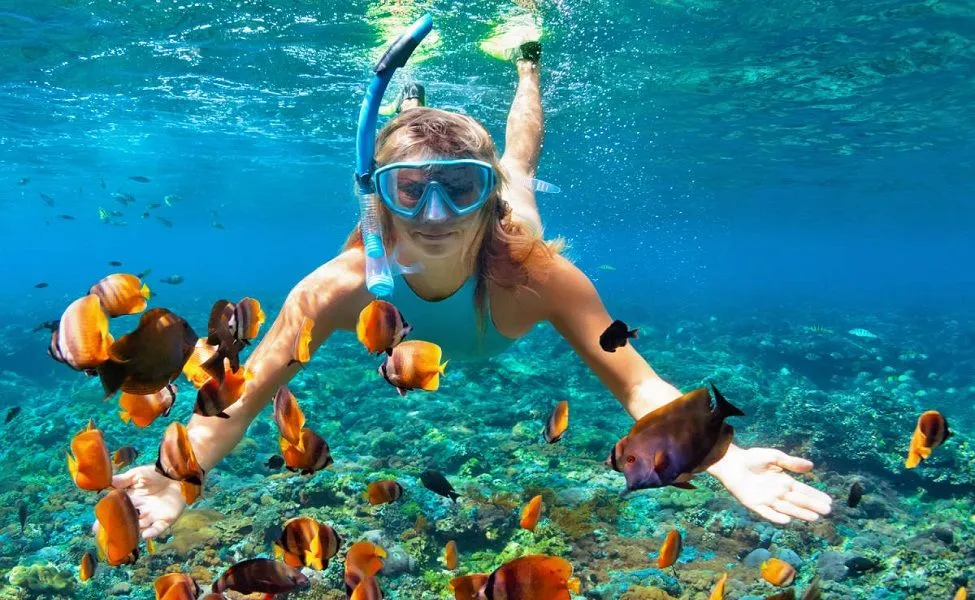
Known for its exquisite coral reefs and captivating blue waters, Elephant Beach epitomizes the tropical allure of the Andaman and Nicobar Islands. This beach is a hotspot for tourists seeking adventure, offering an array of water sports activities such as snorkeling, swimming, banana boat rides, speed boating, and diving. The vibrant marine life and stunning coral formations make Elephant Beach an essential stop for anyone visiting the islands.
Immerse yourself in the endless beauty and activities that the Andaman and Nicobar Islands offer, and let this Andaman travel guide be your companion in discovering the treasures beyond the North Sentinelese Island.
Start your journey of exploration comfortably with Savaari
While witnessing the beauty of Andaman Island is an unforgettable experience, the beginning of any journey sets the tone for the entire adventure. Ensure a smooth and convenient start to your trip by booking a ride to Chennai Port through the Savaari app.
This seamless start can pave the way for a voyage filled with awe-inspiring vistas and the enriching experience of diving into the local lore and natural beauty of the Andaman Islands. The Andaman Islands, with its untamed beauty, is a vivid reminder of our planet’s dynamic essence and the adventures that await when we step out to explore it.
Last Updated on December 17, 2024 by Shabari Shankar

